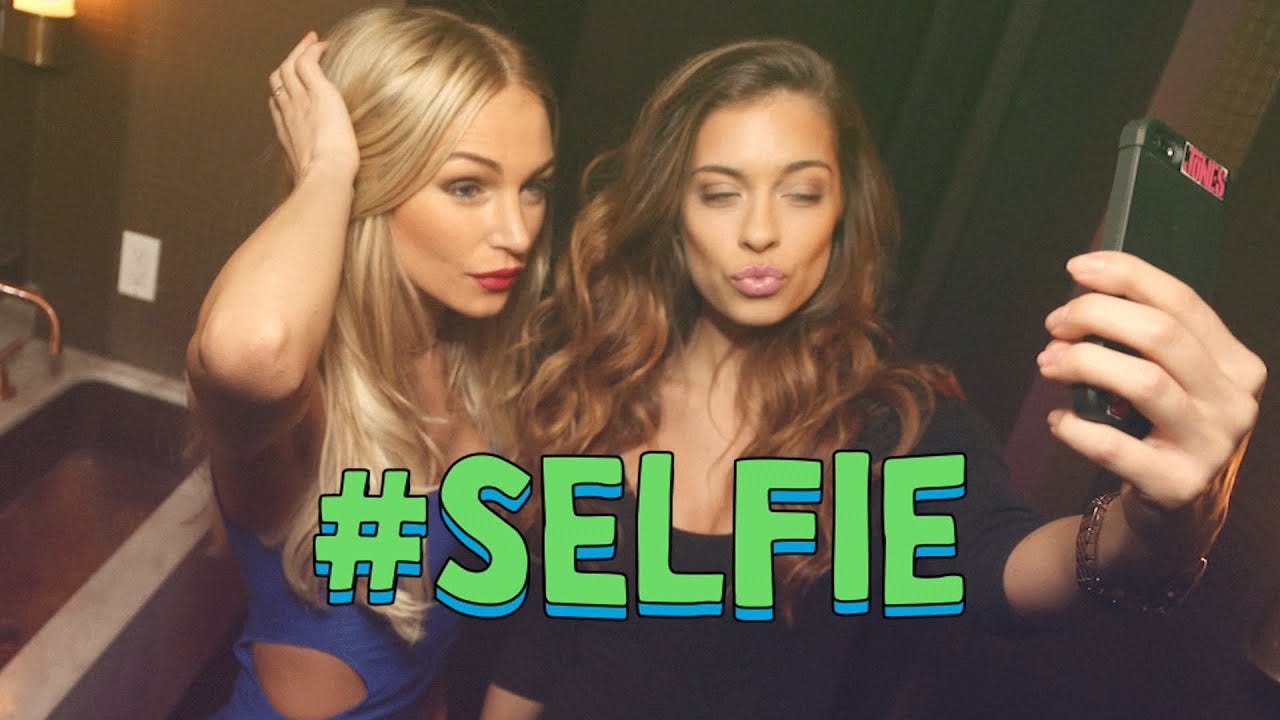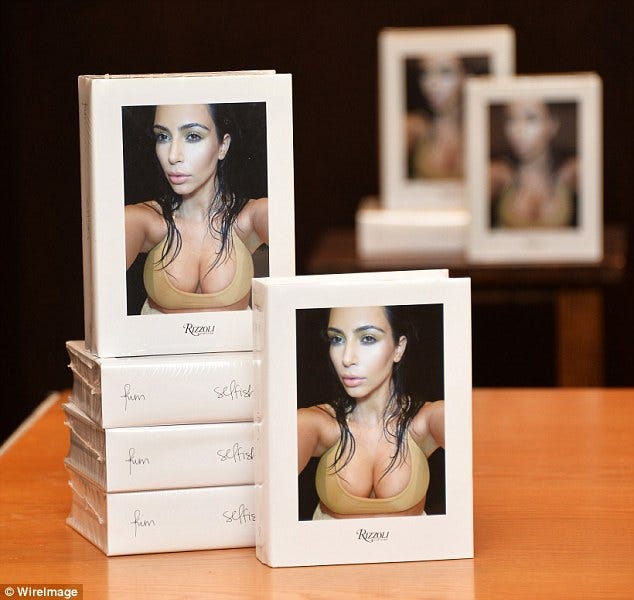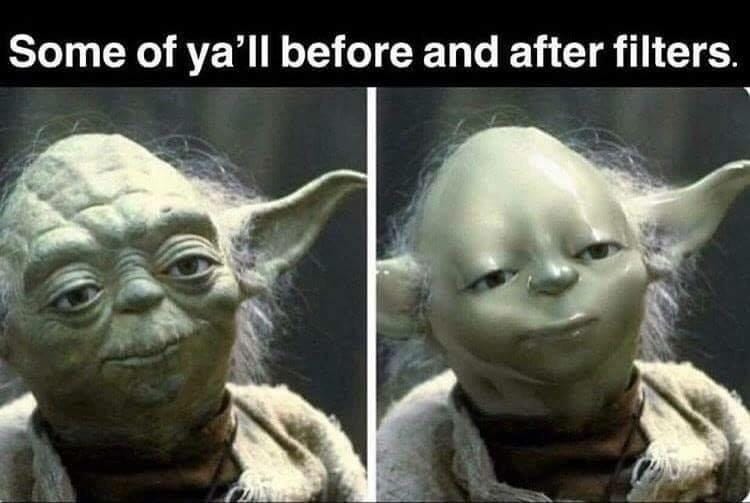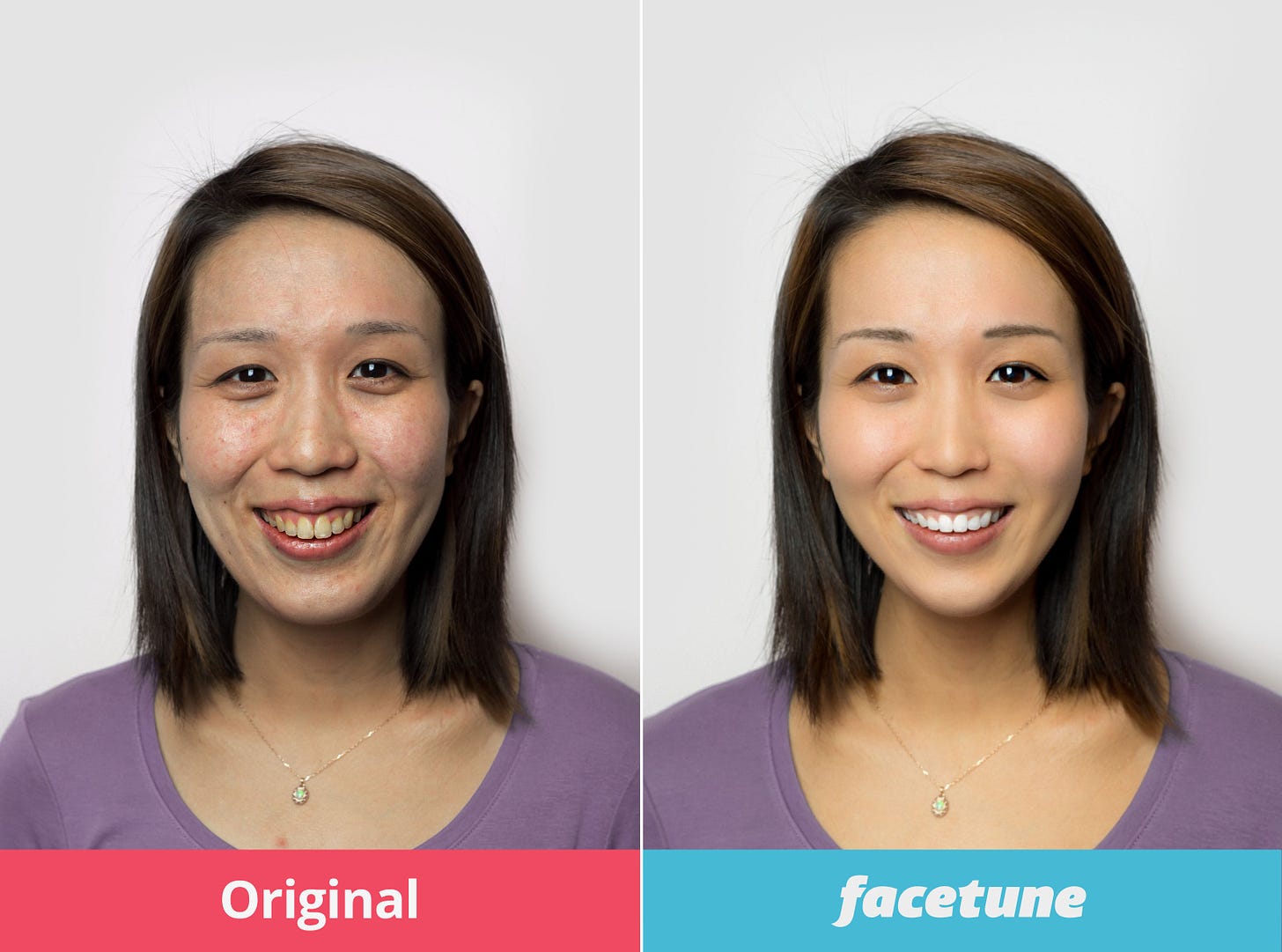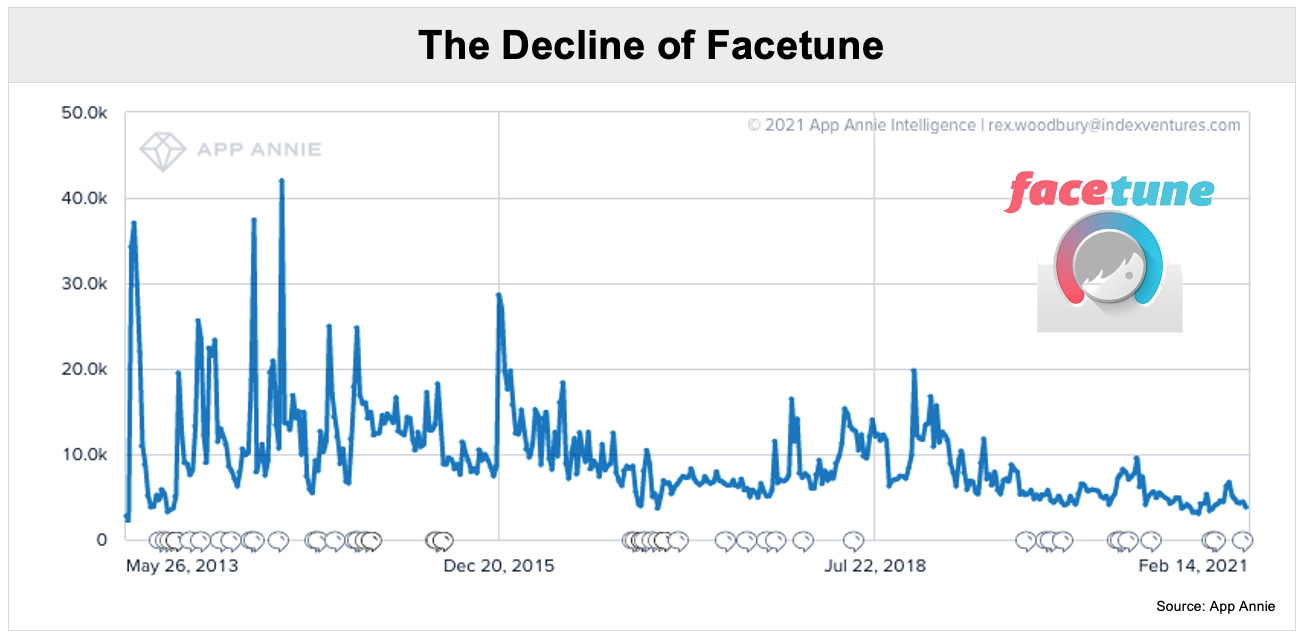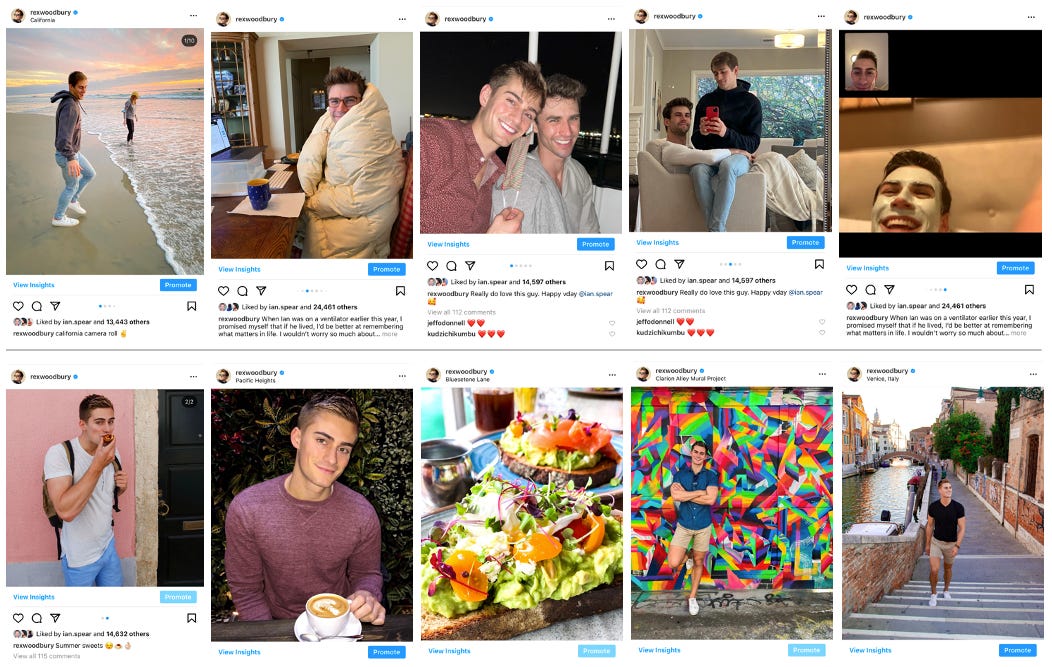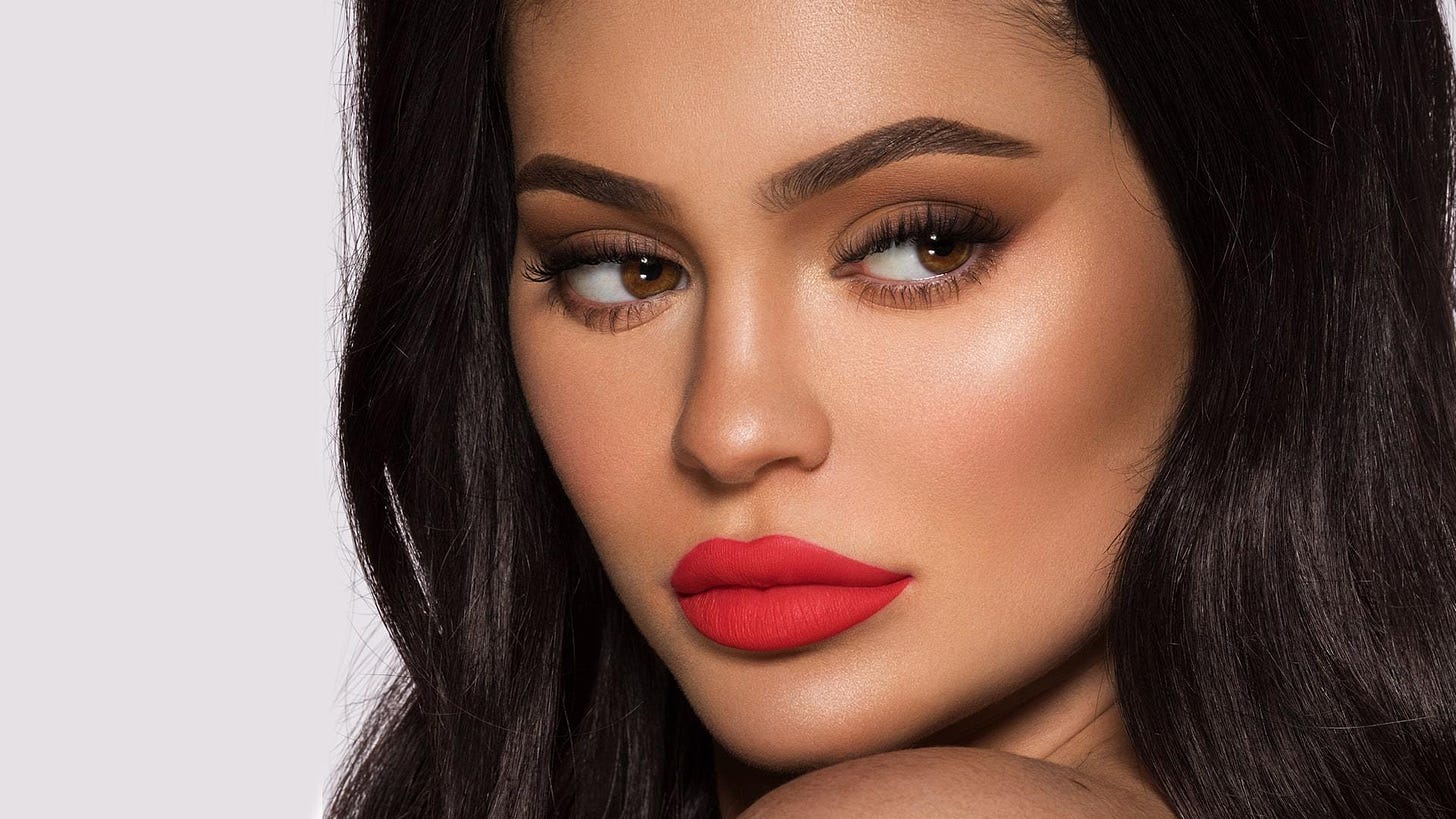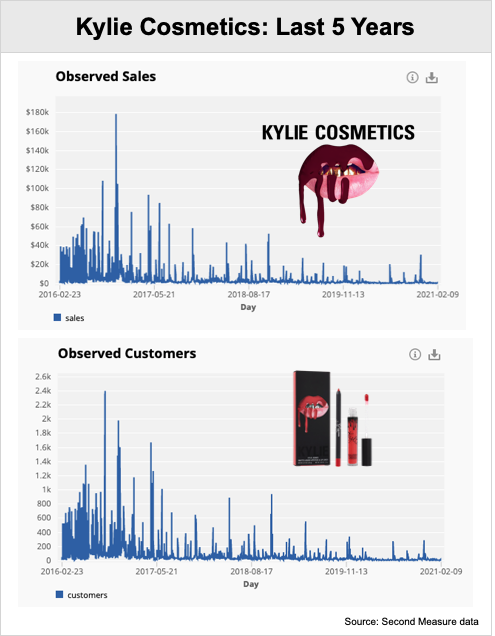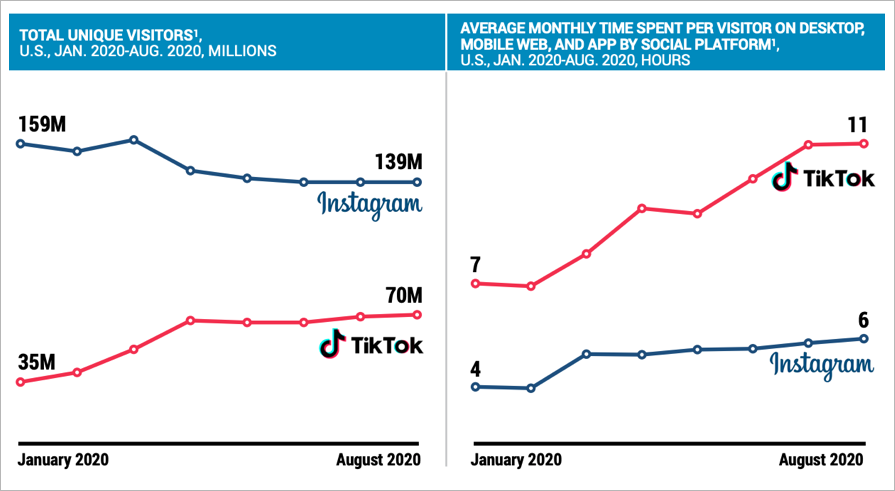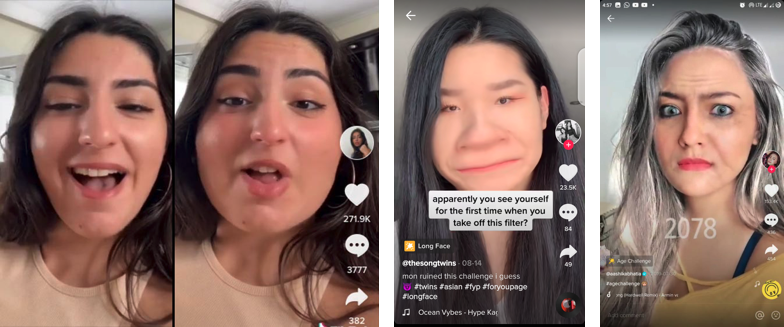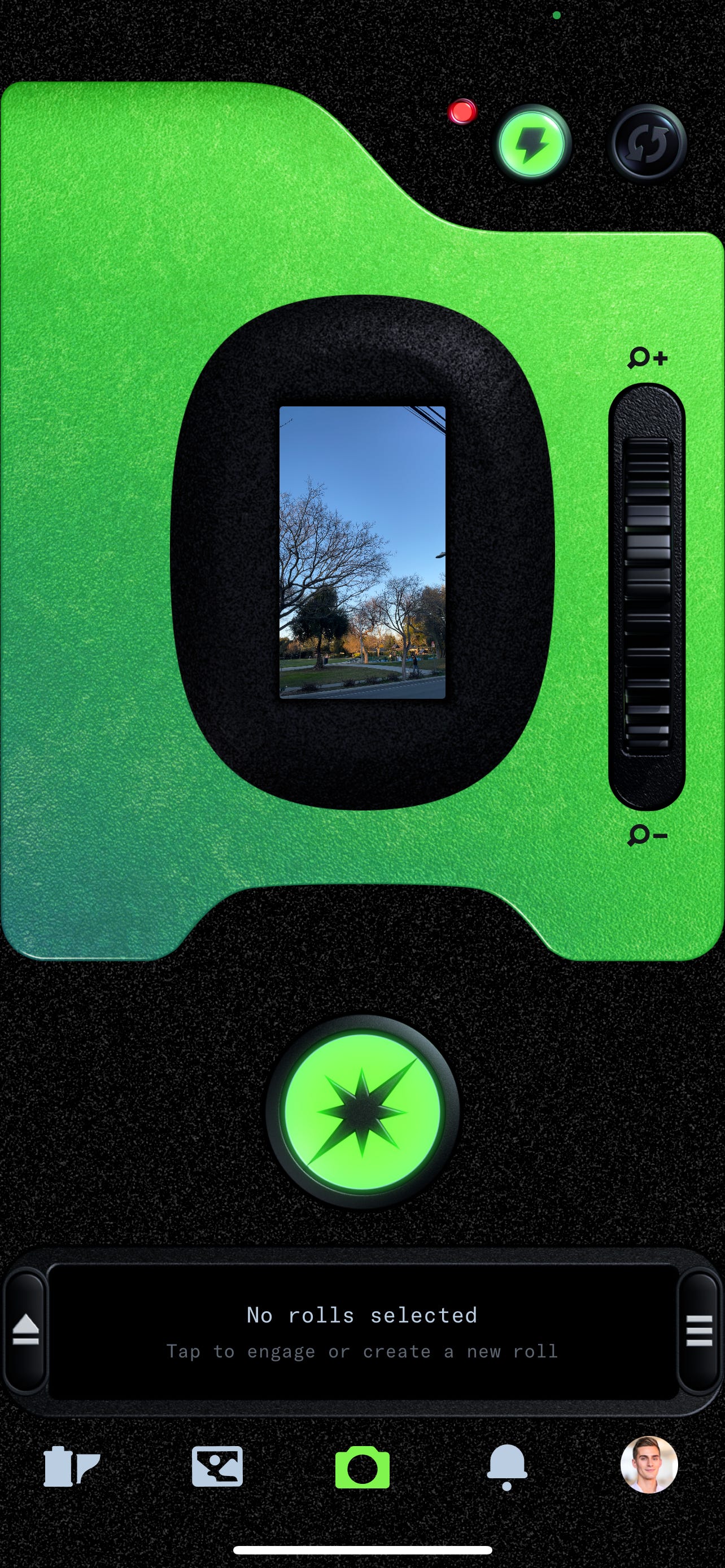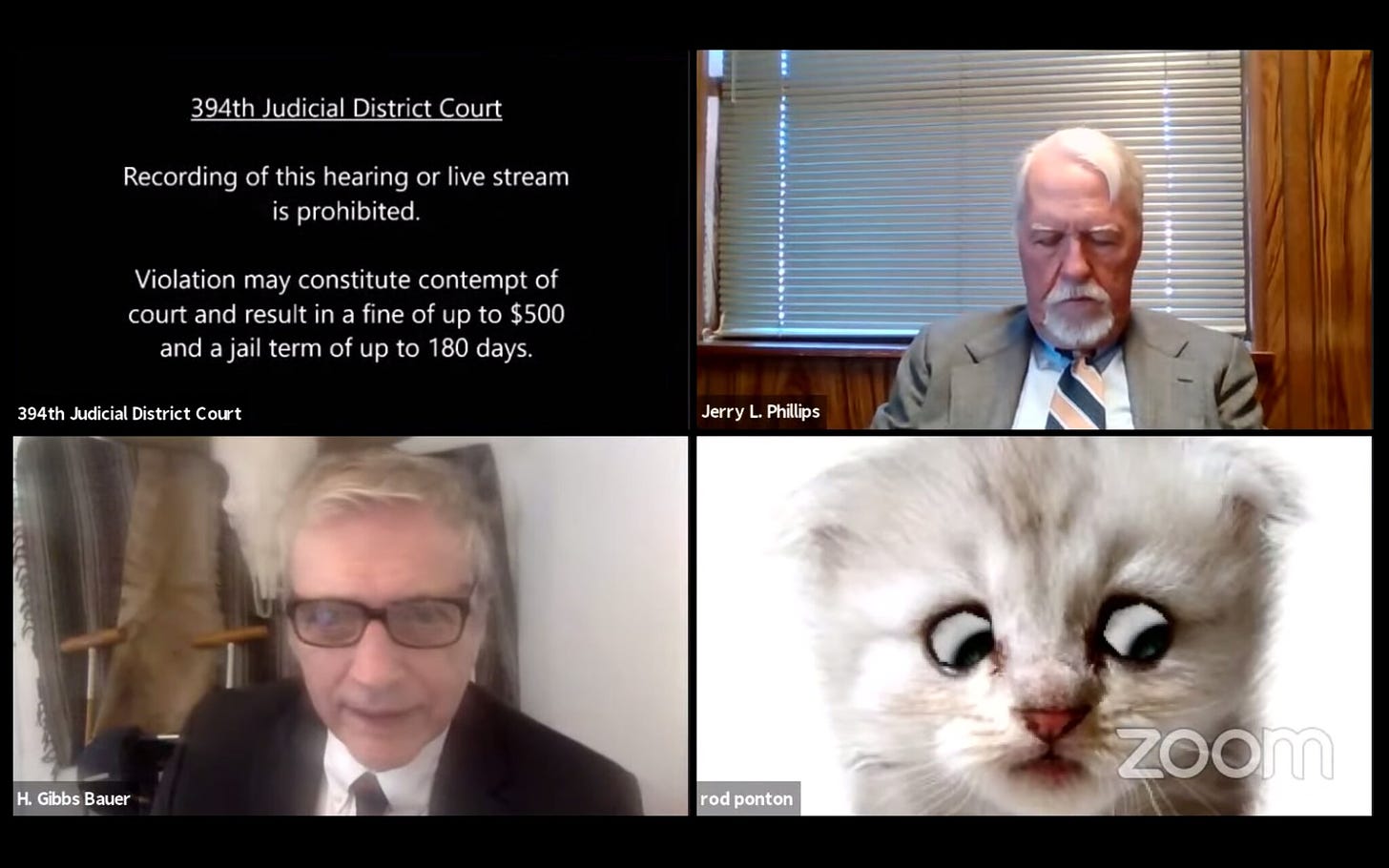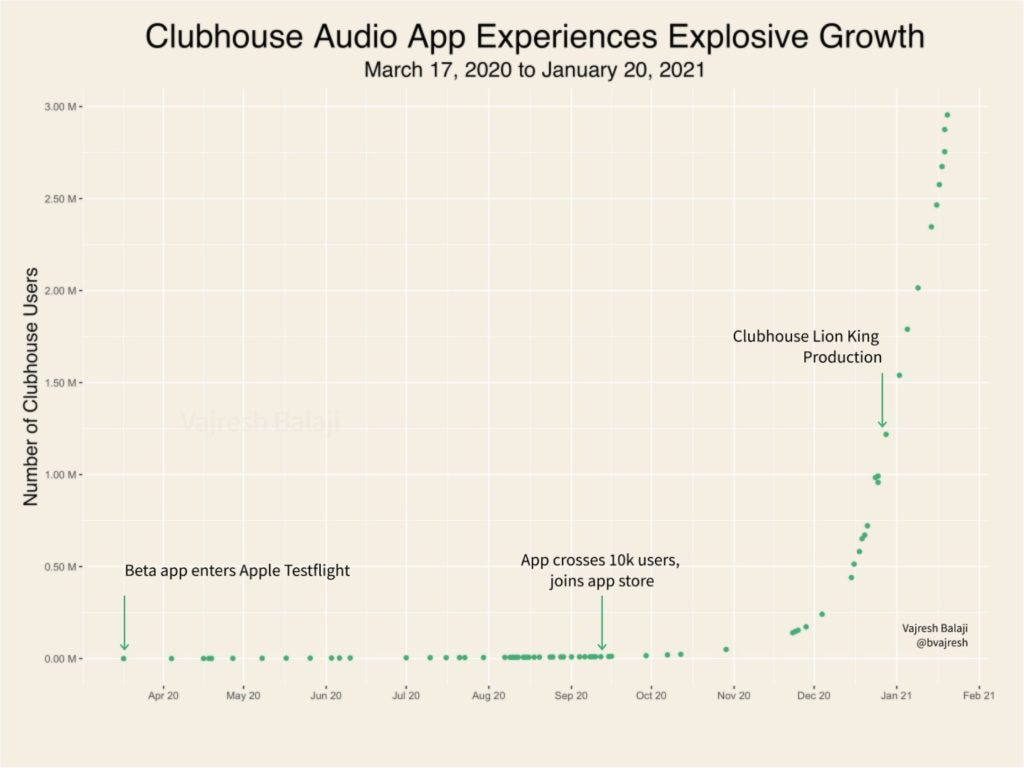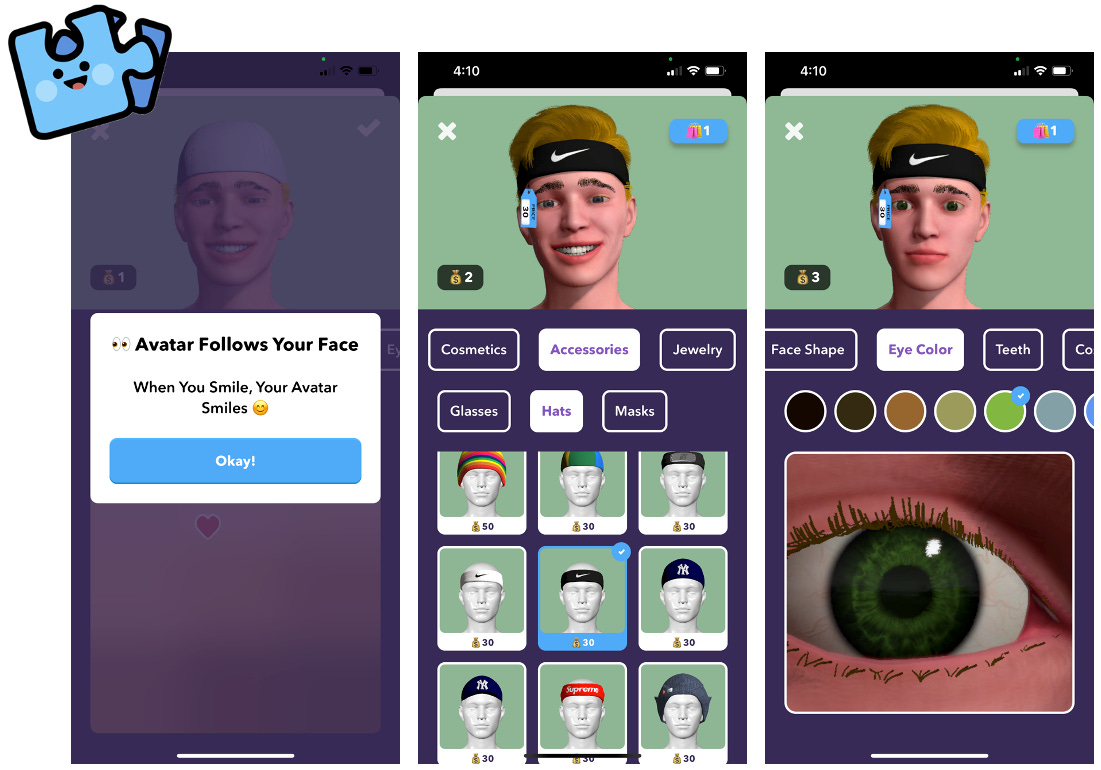This is a weekly newsletter about how people and technology intersect. To receive this newsletter in your inbox each week, subscribe here:
The Rejection of Internet Perfection
In his 1996 novel Infinite Jest, David Foster Wallace foretold a dystopian, technology-infused America that looks eerily like our country today. In Wallace’s America, the rise of a “video phone” makes users so self-conscious about their appearance that they turn to digital masks to look perfect on screen. These masks airbrush wrinkles, whiten teeth, and erase eye bags.
Eventually, people who use the digital masks become so vain and so obsessed with looking flawless that they refuse to interact with people in real life, sans mask.
Written at the inception of the internet (and 11 years before the first iPhone), Infinite Jest foreshadows a quarter-century of consumer technology colliding with human behavior.
When I first worked in investing, I had a thesis that I called the “above the neck” thesis. Basically, it emphasized any product that improves how you look in a selfie.
I developed this thesis not long after “selfie” was named the 2013 Word of the Year by the Oxford Dictionary. And this was around the same time that The Chainsmokers had their first hit with “#SELFIE”, which rose to #1 on the Billboard Dance Club chart (and which will always be a staple of my senior year of college).
Perhaps “peak selfie” happened in 2015, when Kim Kardashian released her book Selfish—a glossy, 352-page (!) coffee-table book of selfies that sold 125,000 copies.
What a time. And no company better encapsulates this era than Lightricks.
Lightricks, which raised $205 million in venture funding from 2015 through 2019, makes Facetune, a photo editing app. Facetune rose alongside Instagram in the mid-2010s—an era of perfectly-coiffed influencers posing with colorful murals, lattes, and Museums of Ice Cream.
The amount that people edited their photos became a well-worn meme:
Facetune used a freemium model, charging users $5.99 / month to unlock all features. In 2017, Facetune was Apple’s most-popular paid app; in 2018, it was downloaded 20 million times and had 500,000 paying users.
What Facetune did is allow anyone to harness the power of professional-grade photoshopping, a decades-old practice in advertising and magazines.
In a somewhat sinister way, Facetune continued the trend of democratized software: just as Shopify makes it easy to launch an online store, Airtable makes it easy to build a business app, and TikTok makes it easy to create videos, Facetune makes it easy to retouch your photos. Where Adobe was clunky, confusing, and desktop-centric, Facetune was elegant, simple, and mobile-first.
Facetune leaned into social media’s distortion of reality; here’s an image Lightricks uses to promote Facetune:
A whole separate piece could be written about how Facetune warped a generation’s beauty standards (and, in doing so, harmed a generation’s self-image and self-esteem).
But the decline of Facetune over the past five years also speaks to a broader shift in how we present ourselves online. Facetune downloads are down ~75% from their peak:
As culture has shifted, Instagram’s growth has stagnated. Tellingly, Facebook last reported Instagram’s monthly active users in June 2018, when Instagram hit 1 billion. Today, Instagram reportedly hovers around 1.2 billion MAUs. In the nine months from September 2017 to June 2018, Instagram added 200 million users; it’s taken 32 months to add the next 200 million.
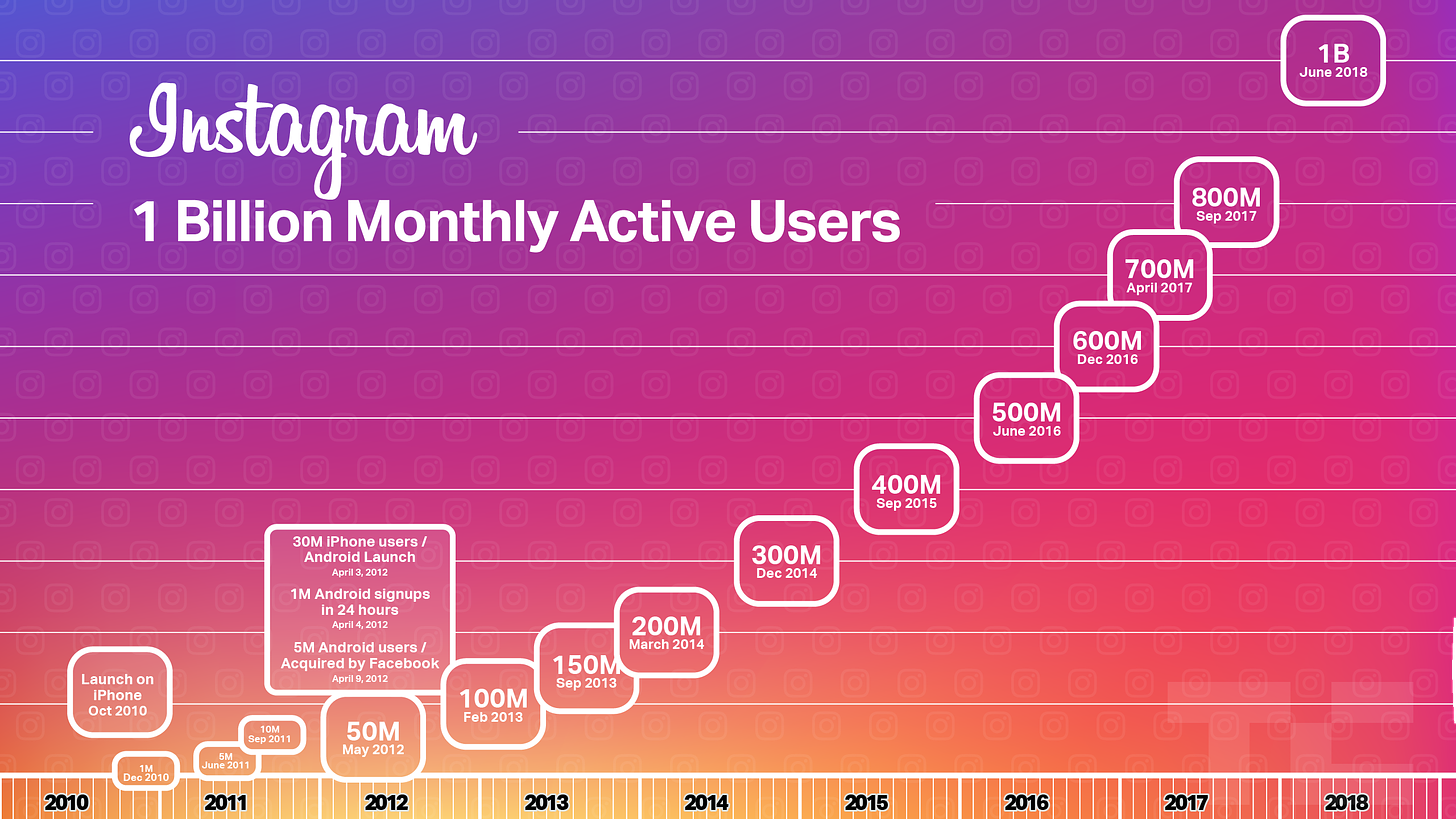
This isn’t new news; the pendulum of culture has been shifting for some time. Nearly two years ago, Taylor Lorenz declared, “The Instagram Aesthetic Is Over” (“It’s not cool anymore to be manufactured,” said one Gen Z.)
I can also see this in the evolution of my own Instagram posts.
The top row of photos is from the last few months—the photos are less contrived and more authentic. The bottom row of photos is from 2017 and 2018. Somehow, I managed to hit on all the cringeworthy influencer stereotypes: colorful walls, latte art, avocado toast, murals, and very-clearly-posed “candid” tourist photos. 🤦🏼♂️ In my defense…no, I can’t defend these.
While this trend has been in motion for some time, there are two recent catalysts:
The rise of TikTok as the first native Gen Z social platform, and
The pandemic driving an impending backlash to video.
Both are accelerating our rejection of internet perfection. I’ll dive into each one.
Just a quick breather to remind you to subscribe to get Digital Native in your inbox each week!
The TikTok Generation
No one embodies Instagram’s mid-2010s peak like Kylie Jenner.
At one point, Kylie owned 11 of the 20 most-liked Instagram photos. She made $1 million per sponsored post, and her Instagram-fueled beauty brand, Kylie Cosmetics, did close to $400 million of revenue in its first year.
But Kylie Cosmetics sales have slumped in recent years:
And Kylie herself hasn’t adapted to the new ethos of the internet. While more approachable, relatable creators like Charli D’Amelio thrive on TikTok (#1-most-followed, 108M followers, 8.4B likes), Kylie has struggled (#32-most-followed, 27M followers, 252M likes).
More broadly, TikTok has replaced Instagram as the epicenter of culture. Instagram user growth and time spent is stagnant or declining, while TikTok is surging on both metrics.
TikTok is the first Gen Z-native social platform and it embodies Gen Z values. Inauthentic or performative content is sniffed out quickly and called out. In many ways, how Gen Zs use TikTok (and, to a lesser extent, Snapchat) is a reaction to how Millennials used Instagram.
This is clear in trending challenges and visual effects; some examples:
One of the most popular filters is 2078, which makes you look old and wrinkled.
Another popular filter is the Chubby Face effect, which gives you—you guessed it—a chubby face. The hashtag #fatface has 10.8 million views.
While Chubby Face saw some backlash for being “fatphobic”, another trend embraces being overweight. Creators pretend to have lost an incredible amount of weight with a strict diet and workout regimen. They show their “new” self—only to then reveal that it’s just a skinny lookalike friend. The original creator walks through the background, usually eating a bag of chips and laughing.
Another common video is to see a creator—usually a young woman—transform herself with make-up. These videos have a surprising vulnerability to them, as the creator is revealing the “before”, emphasizing her blemishes and wrinkles.
These videos are a dramatic departure from the Facetuned influencers of five years ago. Younger people are allergic to the contrived nature of Social Media 1.0 and 2.0, caring more about quality content and connection than about looking good.
This behavior change shows up in new products. Dispo, an app founded by 24-year-old YouTube and TikTok star David Dobrik, lets you take photos that “develop” overnight like a disposable camera. You can’t view your photos until 9:00am the next morning, forcing you to “live in the moment” (the app’s tagline).
I tried out Dispo’s beta app and the “lens” is almost comically small, which has the surprisingly pleasant effect of forcing you to not worry about getting the perfect shot.
We’re seeing a fascinating reversing of culture. Where Instagram filters in 2011 made everyone beautiful, TikTok filters in 2021 make everyone ugly. And where Instagram gave you filters to help your bad photos look good, Dispo purposefully makes your good photos look worse.
The Impending Video Backlash
The second important shift in the last 12 months is the rise of Zoom and Zoom fatigue. People are so exhausted that they’re taking their meetings as cats:
Just kidding. But video calls are reaching a fever pitch, and we’re going to see a backlash to video.
One early reaction to Zoom fatigue is the resurgence of audio. Clubhouse is the most obviously example: its rise has been nothing short of meteoric.
Yes, Clubhouse is benefiting from the pandemic giving us more time at home. But it’s also benefiting from video’s pandemic-fueled overexposure, as well as a years-long backlash to online perfection.
Discord is another beneficiary, as the popularity of voice channels and audio-centric games like Among Us power it to new heights.

Ironically, in Infinite Jest, audio also becomes a salve to video fatigue. When people become too self-conscious to interact without their digital masks, a new technology removes human faces from the equation, similar to a modern podcast, Clubhouse room, or phone call. David Foster Wallace writes:
“Callers of course found that they were once again stresslessly invisible, unvainly makeup- and toupee-less and baggy-eyed…once again free.”
Beyond audio, new innovative products are making online interaction possible without the pressures of looking good. Itsme is a new app (#37 right now in the App Store) that lets you interact through an avatar.
The avatar tracks your face using your phone’s camera: when I smile, my avatar smiles; when I frown, my avatar frowns. You can also personalize your avatar—here are screenshots of me designing my avatar:
Itsme’s App Store description includes the tagline, “Don’t get judged by your face.”
Over the next 12 months, the backlash to video will grow more pronounced. Audio-based products like Clubhouse and avatar-based products like Itsme will offer online interaction that’s free from the burdens of a previous generation of visual-centric consumer technology companies.
Final Thoughts
In The Jetsons, Jane Jetson often put on her “morning mask” for video calls. This sentiment resonates with anyone who’s been working from home the last 10 months.
Zoom’s airbrush feature—which smooths your wrinkles and improves your skin—has eerie hints of the digital masks in Infinite Jest.
But I don’t think we’ll need our morning masks or Zoom airbrushes much longer. It’s becoming more accepted—even celebrated—to be authentic and personal and vulnerable. Having your kids run through your Zoom meeting humanizes you. The “above the neck” investment thesis no longer holds.
Cultural shifts aren’t linear. They’re gradual and they’re inconsistent. Last year, there was a boom in plastic surgery after people spent months staring at themselves on Zoom, mirroring the boom in plastic surgery that accompanied social media’s rise. (In 2017, a survey of plastic surgeons found that 55% of patients requested surgery to improve their appearance in selfies.) People are human, after all.
But I expect we’ll see a backlash to video and, more broadly, a continued rejection of online perfection. This trend may break along generational lines. Older generations that can’t shake their image-conscious relationship with the internet may turn to audio products like Clubhouse or (gasp!) phone calls. Younger generations that never aspired to be perfect online may lean into rawer products like TikTok and Dispo.
The events of the last 12 months—the coming-of-age of Gen Z and the COVID-fueled overexposure of video—will shape the next generation of culture. Technology will adapt to and eventually hasten these behavior shifts, forging a more imperfect—and ultimately better—internet.
Sources & Additional Reading
Infinite Jest | David Foster Wallace
Facetune and the Internet’s Endless Pursuit of Physical Perfection | Rebecca Jennings, Vox
Influencers Are Abandoning the Instagram Look | Taylor Lorenz
The Cracks in Instagram Perfection | NYTimes
Thanks for reading! Subscribe here to receive this newsletter in your inbox each week:



